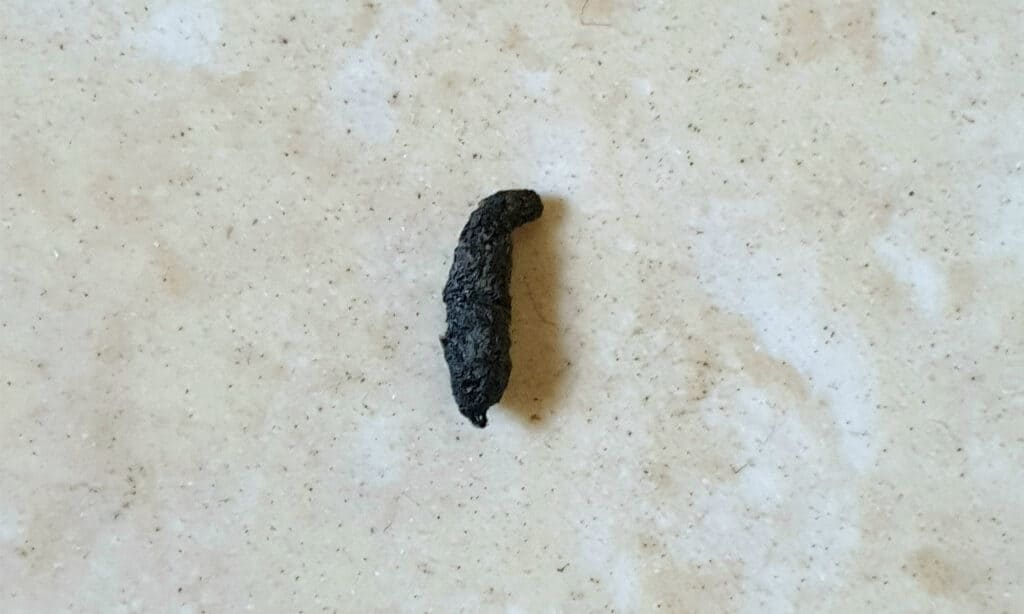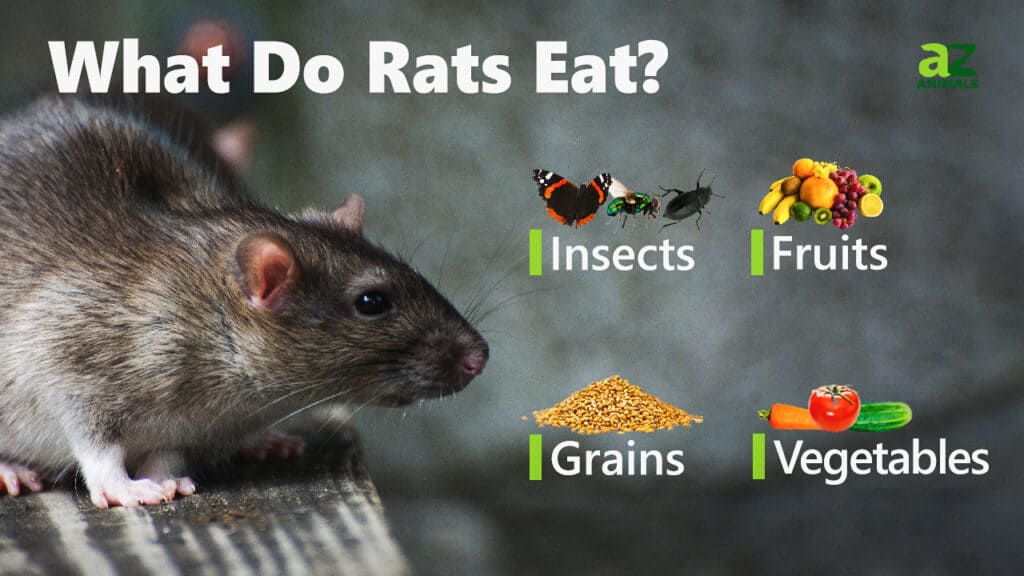Now and then, you might encounter a few tiny dirt in your home that may look too large to be just dirt. If you are positive that you have rats near your home, then that might be some rat droppings you see. However, it is quite hard to recognize the poop of tiny animals because they are too tiny. So how do you identify rat poop? And what do rat droppings look like?
The smallest pieces of evidence—gnaw marks, scratches, nests, and yes, poop—often reveal whether you have a rat infestation. Besides being disgusting, rat waste is also highly spreadable and can cause leptospirosis, tularemia, and salmonella infections. Since mice and cockroaches produce similar messes, it might be difficult to recognize a mound of droppings in your home. Rat waste also resembles certain common food, such as chocolate, coffee beans, or raisins. In this article, we will explore everything you need to know about rat poop, what rat droppings look like and other fascinating rat facts.
What Do Rat Droppings Look Like?

©iStock.com/AAhmad Khan
If your property has a rat infestation, you may discover small, dark pellets of excrement dispersed around. Rat droppings are cylindrical, up to an inch long, and have rounded ends, giving them the appearance of a small olive or coffee bean. Most fresh rat poop is glossy and black and about the size of a small raisin. They resemble an olive in shape and form and are frequently found next to insulation.
Older rat poop is grayer and dustier, while fresh rat dung is dark and lustrous. If you only discover the former, these may be leftovers from an earlier infestation. Due to their size and shape, rat droppings can sometimes be mistaken for everyday foods, making them hazardous for animals and homeowners.
Is Rat Poop Harmful?

Rats can spread disease through their feces.
©iStock.com/Bilanol
Since rats can spread disease through their feces, they risk the general public’s health. Because of this, it’s crucial to remove rat excrement properly. Furthermore, seeing a doctor as soon as possible is crucial if you unintentionally come into contact with rat droppings while pregnant. Your health and your unborn child’s well-being could be in peril.
Although rat droppings can be very dangerous for humans, they can also be exceedingly deadly for dogs. Leptospirosis, roundworm, tularemia or rabbit fever, rat-bite fever, toxoplasmosis, and the plague are potentially fatal infections dogs can easily contract from rat excrement. Your pets could be at risk if precautions aren’t done as soon as possible.
In addition, when hantaviruses are inhaled, people can develop Hantavirus Pulmonary Syndrome (HPS). This can occur when hantavirus-infected rodent urine and feces are mixed into the air. Additionally, the virus can spread when a person touches mouse or rat urine, droppings, or nesting materials and then touches their eyes, nose, or mouth.
Rats are tenacious creatures with many cunning ways of entering people’s houses, attics, and garages. They can also gnaw through materials like plastic, rubber, wood, glass, and even electrical wire, which could catch fire if it sparks.
What Do Rats Eat?

When thinking about an animal’s scat, the first question that comes to mind is, “what food do they eat?” Rats are omnivores that feed on various food, including grains, seeds, nuts, fruits, vegetables, small animals, and insects.
Brown and black rats adore insects that are high in protein, and certain kinds, like the ship rat, are excellent climbers, allowing them to enter nests and take eggs. Rats love to feast on overripe fruit from fruit trees, and your compost bin is full of delicious veggies they adore. Any kind of nut is their favorite, and rats will forage under walnut trees and look for your jar of peanut butter.
Like us, rats may get much of their energy from grains and seeds, which explains why they are frequently seen in sites like feed stores, chicken coops, and even areas where you may be providing food for birds on your lawn.
Rats are always known to live where humans are because they are among the top scavengers on the planet. They frequently hang out in or near trash cans because they enjoy human waste. When assessing the effectiveness of your rat trap, it is crucial to take into account the type of trash that is there.
Do Rat Droppings Smell?
They do, indeed. Rat urine, on the other hand, smells significantly stronger. Rat urine will undoubtedly be present in your home if there are rat droppings. Therefore, the urine will most likely be the source of the offensive odor.
How Do Rat Droppings Differ from Other Pests?
Rat poop is often confused with mouse poop or squirrel poop. The size and shape of rat and squirrel droppings are identical, and the only distinction is where you might locate them. Rat feces are always dispersed because they use waste to mark their territory. Squirrels, on the other hand, frequently urinate in the same location. Furthermore, rather than the pointy, sharp edges of rat excrement, the dung pellets in squirrel droppings have rounded ends.
In contrast, mouse feces are typically a little longer than a quarter-inch and are much smaller than rat feces. The taper will be crucial in distinguishing between rat and mouse poop because mice don’t often make spherical stools. Compared to rat poop, which is glossy, mouse poop is considerably duller and more matte in appearance. Meanwhile, cockroaches leave behind droppings resembling ground coffee or black pepper.
Where Do Rats Live?
All around the planet, rats exist. They are found in Asia, North and South America, Australia, Europe, and India. Warm to moderate temperatures are home to these species. Consider it this way: rats are almost always present close to human settlements.
These creatures may live in a wide range of settings. Some species live in trees, while others reside in the basements and attics of houses. They occupy sewers, drain pipes, and riverbank areas. Many spend most of their life underground and only emerge to hunt for food.
The photo featured at the top of this post is © iStock.com/Kichigin
Thank you for reading! Have some feedback for us? Contact the AZ Animals editorial team.






